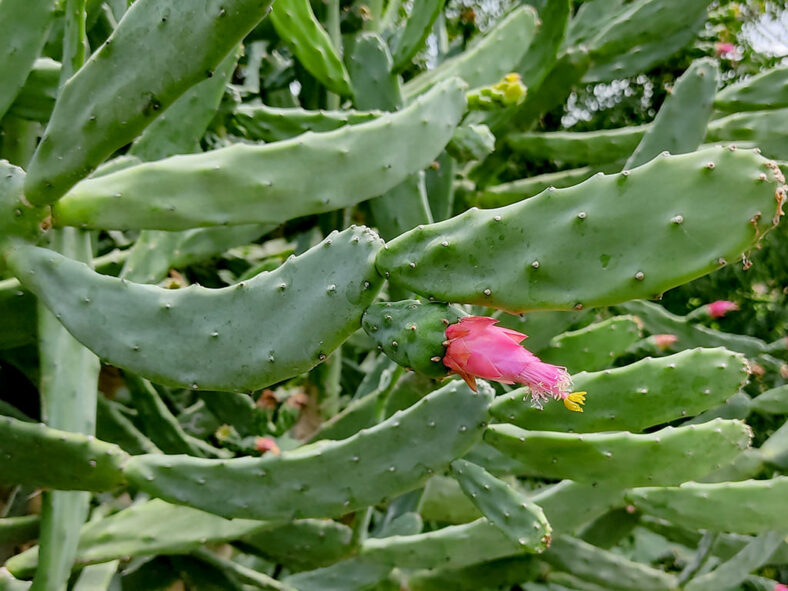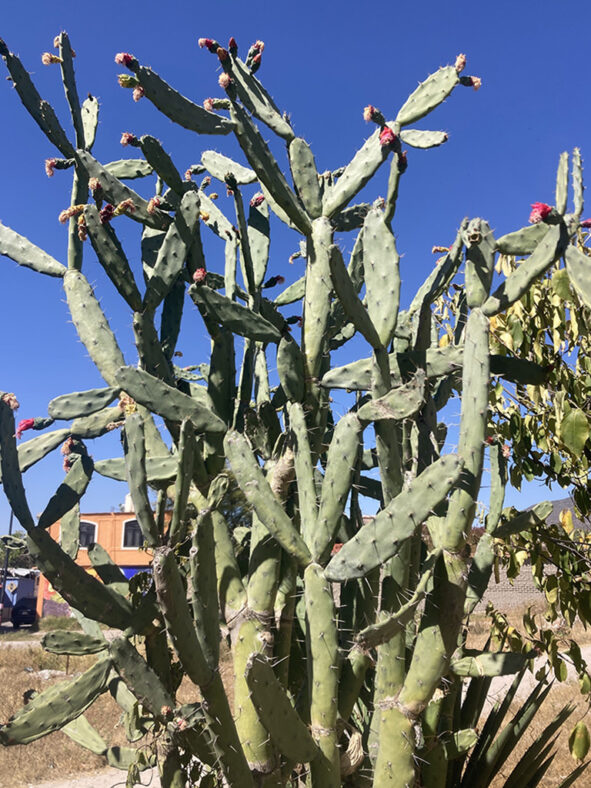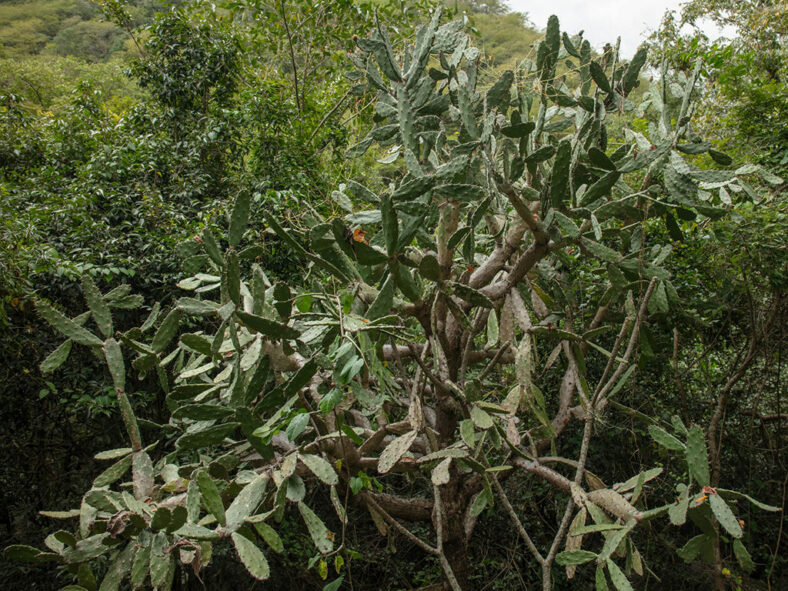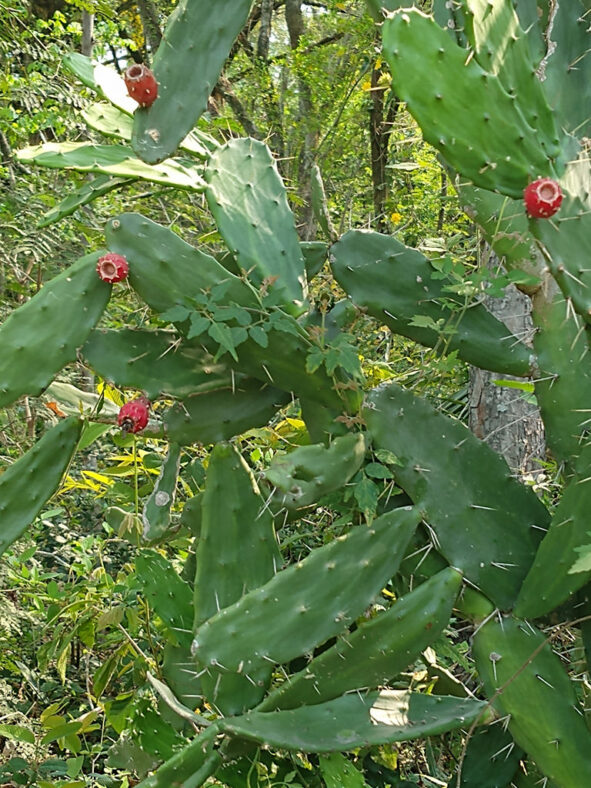Opuntia auberi was described by Ludwig Karl Georg Pfeiffer and published in Allgemeine Gartenzeitung in 1840.
Scientific Name
Opuntia auberi Pfeiff.
Synonym(s)
Nopalea auberi
Scientific Classification
Family: Cactaceae
Subfamily: Opuntioideae
Tribe: Opuntieae
Genus: Opuntia
Etymology
The specific epithet "auberi" (pronounced "oh-BER-ee") honors Pierre Alexandre (Pedro Alejandro) Auber (1786-1843), a French-born Cuban professor of botany at the University of Havana and the director of its botanical garden.
Origin
Opuntia auberi is native to southern North America, specifically from southern to central Mexico and Central America, including Honduras and Guatemala. Its range extends to Cuba and the Antilles. This species typically grows in dry, deciduous forests and disturbed open areas at elevations between 3,280 and 4,920 feet (1,000 and 1,500 m).
Description
Opuntia auberi is a tree-like or shrubby cactus with a cylindrical stem and branches of joined, ovoid segments known as pads. It typically grows up to 16.4 feet (5 m) tall, although it can occasionally reach a height of up to 26.2 feet (8 m). The stem is brown and generally spineless, featuring only tufts of brownish glochids. The pads can be as long as 12 inches (30 cm) and 2 inches (5 cm) wide. Their color ranges from blue-green to gray-green but can take on pink or purple hues in winter or when exposed to intense sunlight. Each pad usually has two to three spines per areole, although spines can sometimes be absent. The spines are white with darker tips.
From mid-spring to early summer, Opuntia auberi produces striking dark pink flowers that can reach up to 3.6 inches (9 cm) in length. The fruits are red, roughly fig-shaped, and adorned with tufts of glochids. They contain sweet, juicy pulp and numerous hard-coated seeds.

How to Grow and Care for Opuntia auberi
Light: Opuntia auberi thrives in full sun, but some shade during midday and afternoon can prevent sunburn in hot climates. When grown indoors, it works best in a window that receives sunlight for 6 hours a day.
Soil: This cactus requires a well-draining soil mix. You can use a commercial cactus potting mix or create your own.
Temperature: Opuntia auberi is highly tolerant of high temperatures and prefers cooler temperatures in winter. It grows best in USDA Plant Hardiness Zones 8b to 11b, with average minimum winter temperatures ranging from 15 to 50 °F (-9.4 to 10 °C).
Watering: From spring to fall, water moderately and let the soil dry out completely before watering again. In most areas, rainfall will be enough for established plants. If potted, never let the container sit in water. Suspend watering during the winter.
Fertilizing: Opuntia auberi does not need fertilizer when planted in the ground. However, it will benefit from fertilizing when grown in a container during the growing season. Apply a water-soluble fertilizer. Suspend feeding during the winter when the plant goes dormant.
Repotting: Repot only when the cactus becomes potbound or is too large and unstable in its container. Choose a slightly larger container with drainage holes at the bottom. The best time for repotting is late winter or early spring.
Propagation: Opuntia auberi can be propagated by stem segments or seeds. The easiest method is using stem segments, which yields faster results. For best results, take the stem segments in early summer and sow the seeds in late spring.
Learn more at How to Grow and Care for Opuntia.
Toxicity of Opuntia auberi
Opuntia auberi is not toxic to humans or pets. However, keeping this plant away from pets and children is best, as it has harmful spines and glochids that may cause skin irritation.
Links
- Back to genus Opuntia
- Succupedia: Browse succulents by Scientific Name, Common Name, Genus, Family, USDA Hardiness Zone, Origin, or cacti by Genus
Photo Gallery
Click on a photo to see a larger version.


